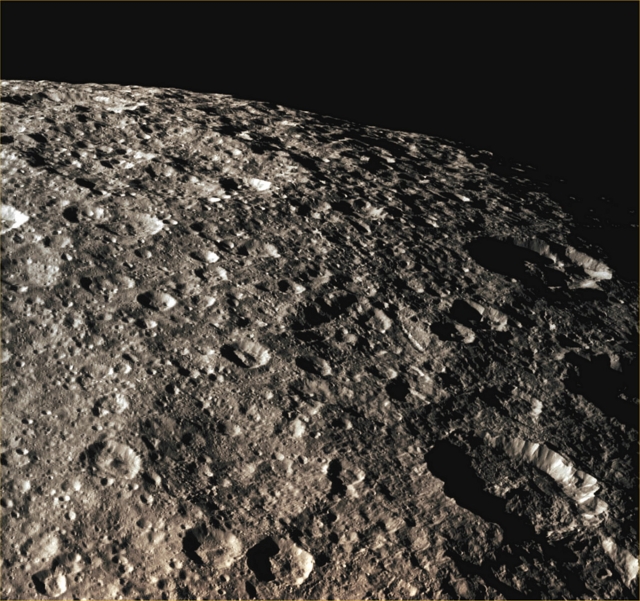
May 4, 2012
Credits: NASA/JPL/Space Science Institute - Credits for the additional process. and color.: Dr Paolo C. Fienga/Lunar Explorer Italia/IPF
|
The Surface of the Saturnian moon Rhea can be divided into two geologically different areas based on the so-called "Crater Density": the first area contains Impact Craters which are larger than 40 Km in diameter, whereas the second area, in parts of the Polar and Equatorial Regions, has only Impact Craters under that size. This suggests that a Major Resurfacing Event should have occurred at some point, during its formation. The Leading Hemisphere of this moon (such as the side of Rhea that faces forward, into its direction of motion), as you can clearly see in today's APOD, is heavily cratered and uniformly bright but, as it also occurs on the Jovian moon Callistus, almost all the visible Impact Craters lack the high Relief Features (---> Central Peaks/Uplifts) that instead are commonly seen, for instance, on the Moon and Mercury. On its Trailing Hemisphere (such as that side of Rhea that faces away from its direction of motion), on the other hand, it can be seen a network of Bright Swaths on a dark background and a few visible Impact Craters. It had been thought that these bright areas might be Material ejected from Ice Volcanoes early in Rhea's history, when its interior was still liquid. However, observations of the other Saturnian moon Dione (which has an even darker Trailing Hemisphere and similar, but more prominent, bright Streaks), showed that the Streaks are actually Ice Cliffs resulting from extensive Fracturing of the moon's Surface. This picture was taken by the NASA - Cassini Spacecraft during the Fly-By of Rhea that occurred on March 10, 2012. This view is centered on Terrain located at about 58° North Latitude and 84° West Longitude. The image was taken in Visible Light with the Cassini Spacecraft Narrow-Angle Camera. The view was obtained from a distance of approximately 27.000 miles (such as about 43.000 Km) from Rhea and at a Sun-Rhea-Cassini, or Phase, Angle of 67°. Image scale is 827 feet (252 meters) per pixel. This frame has been colorized in Absolute Natural Colors (such as the colors that a human eye would actually perceive if someone were onboard the NASA - Cassini Spacecraft and then looked outside, towards the Saturnian moon Rhea), by using an original technique created - and, in time, dramatically improved - by the Lunar Explorer Italia Team.
|
News visualized: 688 times

